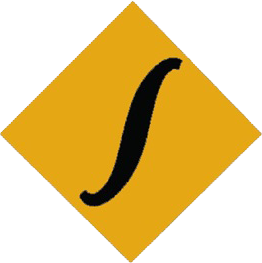NEB class 11 and 12 business mathematics new curriculum and syllabus
Mathematics is an indispensable in many fields. It is essential in the field of engineering, medicine, natural sciences, finance and other social sciences. The branch of mathematics concerned with application of mathematical knowledge to other fields and inspires new mathematical discoveries. The new discoveries in mathematics led to the development of entirely new mathematical disciplines. School mathematics is necessary as the backbone for higher study in different disciplines. Mathematics curriculum at secondary level is the extension of mathematics curriculum offered in lower grades (1 to 10).
NEB Class 11 and 12 Business Maths Chapter Summary
Chapter Summary of business maths (New NEB Curriculum syllabus Class 11 and 12) | |
Class 11 | Class 12 |
| 1. Algebra | 1. Algebra |
| 2. Trigonometry | 2. Trigonometry |
| 3. Analytics geometry | 3. Analytics geometry |
| 4. Vectors | 4. Vectors |
| 5. Statistics and probability | 5. Statistics and probability |
| 6. Calculus | 6. Calculus |
| 7. Computational methods | 7. Computational methods |
| 8. Mathematics for economics and finance | 8. Mathematics for economics and finance |
NEB class 11 Business Mathematics
Unit | Content |
| 1. Algebra (32 hr) | 1.1 Logic and Set: introduction of Logic, statements, logical connectives, truth tables, basic laws of logic, theorems based on set operations. 1.2 Real numbers: field axioms, order axioms, interval, absolute value, geometric representation of real numbers. 1.3 Function:Review, domain & range of a function, Inverse function, composite function, functions of special type, algebraic (linear, quadratic & cubic), Trigonometric, exponential, logarithmic) 1.4 Curve sketching: odd and even functions, periodicity of a function, symmetry (about origin, x-and y-axis), monotonicity of a function, sketching graphs of polynomials and some rational functions ,Trigonometric, exponential, logarithmic function (simple cases only) 1.5 Sequence and series: arithmetic, geometric, harmonic sequences and series and their properties A.M, G.M, H.M and their relations, sum of infinite geometric series. 1.6 Matrices and determinants: Transpose of a matrix and its properties, Minors and cofactors, Adjoint, Inverse matrix, Determinant of a square matrix, Properties of determinants (without proof) 1.7 Complex number: definition imaginary unit, algebra of complex numbers, geometric representation, absolute value (Modulus) and conjugate of a complex numbers and their properties, square root of a complex number, polar form of complex numbers. |
| 2. Trigonometry (8 hr) | 2.1 Properties of a triangle (Sine law, Cosine law, tangent law, Projection laws, Half angle laws). 2.2 Solution of triangle(simple cases) |
| 3. Analytics geometry (14 hr) | 3.1 StraightLine:length of perpendicular from a given point to a given line. Bisectors of the angles between two straight lines. Pair of straight lines: General equation of second degree in x and y, condition for representing a pair of lines. Homogenous second-degree equation in x and y. angle between pair of lines. Bisectors of the angles between pair of lines. 3.2 Circle: Condition of tangency of a line at a point to the circle, Tangent and normal to a circle. 3.3 Conic section: Standard equation of parabola, equations of tangent and normal to a parabola at a given point. |
| 4. Vectors (8 hr) | 4.1 Vectors: collinear and non collinear vectors, coplanar and non- coplanar vectors, linear combination of vectors, 4.2 Product of vectors: scalar product of two vectors, angle between two vectors, geometric interpretation of scalar product, properties of scalar product, condition of perpendicularity. |
| 5. Statistics and probability (10 hr) | 5.1 Measure of Dispersion: introduction, standard deviation), variance, coefficient of variation, Skewness (Karl Pearson and Bowley) 5.2 Probability: independent cases, mathematical and empirical definition of probability, two basic laws of probability(without proof). |
| 6. Calculus (32 hr) | 6.1 Limits and continuity: limits of a function, indeterminate forms. algebraic properties of limits (without proof), Basic theorems on limits of algebraic, trigonometric, exponential and logarithmic functions, continuity of a function, types of discontinuity, graphs of discontinuous function. 6.2 Derivatives: derivative of a function, derivatives of algebraic, trigonometric, exponential and logarithmic functions by definition (simple forms), rules of differentiation. derivatives of parametric and implicit functions, higher order derivatives, geometric interpretation of derivative, monotonicity of a function, interval of monotonicity, extreme of a function, concavity, points of inflection, derivative as rate of measure. 6.3 Anti-derivatives: anti-derivative. integration using basic integrals, integration by substitution and by parts methods, the definite integral, the definite integral as an area under the given curve, area between two curves. |
| 7. Computational methods (10 hr) | 7.1 Linear programming Problems: linear programming problems(LPP), solution of LPP by simplex method (two variables) 7.2 Numerical computation Characteristics of numerical computation, accuracy, rate of convergence, numerical stability, efficiency |
| 8. Mechanics OR Mathematics for economics and finance (12 hr) | 8.1 Statics: Forces and resultant forces, parallelogram law of forces, composition and resolution of forces, Resultant of coplanar forces acting on a point, Triangle law of forces and Lami's theorem. 8.2 Dynamics: Motion of particle in a straight line, Motion with uniform acceleration, motion under the gravity, motion down a smooth inclined plane. The concepts and theorem restated and formulated as application of calculus 8.3 Mathematics for economics and finance: Mathematical Models and Functions, Demand and supply, Cost, Revenue, and profit functions, Elasticity of demand, supply and income , Budget and Cost Constraints, Equilibrium and break even |
NEB class 12 Business Mathematics
Unit | Content |
| 1. Algebra (32 hr) | 1.1 Permutation and combination: Basic principle of counting, Permutation of (a) set of objects all different (b) set of objects not all different (c) circular arrangement (d) repeated use of the same objects. Combination of things all different, Properties of combination 1.2 Binomial Theorem: Binomial theorem for a positive integral index, general term. Binomial coefficient, Binomial theorem for any index (without proof), application to approximation. Euler's number. Expansion of 𝑒x ,𝑎x and log(1+x) (without proof) 1.3 Elementary Group Theory: Binary operation, Binary operation on sets of integers and their properties, Definition of a group, Finite and infinite groups. Uniqueness of identity, Uniqueness of inverse, Cancelation law, Abelian group. 1.4 Complex numbers: De Moivre's theorem and its application in finding the roots of a complex number, properties of cube roots of unity. Euler's formula. 1.5 Quadratic equation: Nature and roots of a quadratic equation, Relation between roots and coefficient. Formation of a quadratic equation, Symmetric roots, one or both roots common. 1.6 Mathematical induction: Sum of finite natural numbers, sum of squares of first n-natural numbers, Sum of cubes of first n- natural numbers, Intuition and induction, principle of mathematical induction. 1.7 Matrix based system of linear equation: Consistency of system of linear equations, Solution of a system of linear equations by Cramer's rule. Matrix method (row- equivalent and Inverse) up to three variables. |
| 2. Trigonometry (8 hr) | 2.1 Inverse circular functions. 2.2 Trigonometric equations and general values |
| 3. Analytics geometry (14 hr) | 3.1 Conic section: Standard equations of Ellipse and hyperbola. 3.2 Coordinates in space: direction cosines and ratios of a line general equation of a plane, equation of a plane in intercept and normal form, plane through 3 given points, plane through the intersection of two given planes, parallel and perpendicular planes, angle between two planes, distance of a point from a plane. |
| 4. Vectors (8 hr) | 4.1 Product of Vectors: vector product of two vectors, geometrical interpretation of vector product, properties of vector product, application of vector product in plane trigonometry. 4.2 Scalar triple Product: introduction of scalar triple product |
| 5. Statistics and probability (10 hr) | 5.1 Correlation and Regression: correlation, nature of correlation, correlation coefficient by Karl Pearson's method, interpretation of correlation coefficient, properties of correlation coefficient (without proof), rank correlation by Spearman, regression equation, regression line of y on x and x on y. 5.2 Probability:Dependent cases, conditional probability (without proof), binomial distribution, mean and standard deviation of binomial distribution (without proof). |
| 6. Calculus (32 hr) | 6.1 Derivatives: derivative of inverse trigonometric, exponential and logarithmic function by definition, relationship between continuity and differentiability, rules for differentiating hyperbolic function and inverse hyperbolic function, L’Hospital's rule (0/0, ∞/∞), differentials, tangent and normal, geometrical interpretation and application of Rolle’s theorem and mean value theorem. 6.2 Anti-derivatives:anti- derivatives, standard integrals, integrals reducible to standard forms, integrals of rational function. 6.3 Differential equations: differential equation and its order, degree, differential equations of first order and first degree, differential equations with separable variables, homogenous, linear and exact differential equations. |
| 7. Computational methods (10 hr) | 7.1 ComputingRoots: Approximation & error in computation of roots in non- linear equation, Algebraic and transcendental equations & their solution by bisection and Newton- Raphson Methods 7.2 System of linear equations: Gauss elimination method, Gauss- Seidal method, Ill conditioned systems. 7.3 Numerical integration Trapezoidal and Simpson's rules, estimation of errors. |
| 8. Mechanics OR Mathematics for economics and finance (12 hr) | 8.1 Statics :Resultant of like and unlike parallel forces. 8.2 Dynamics: Newton's laws of motion and projectile. 8.3 Mathematics for economics and finance: Consumer and Producer Surplus, Quadratic functions in Economics, Input-Output analysis, Dynamics of market price, Difference equations, The Cobweb model, Lagged Keynesian macroeconomic model. |



